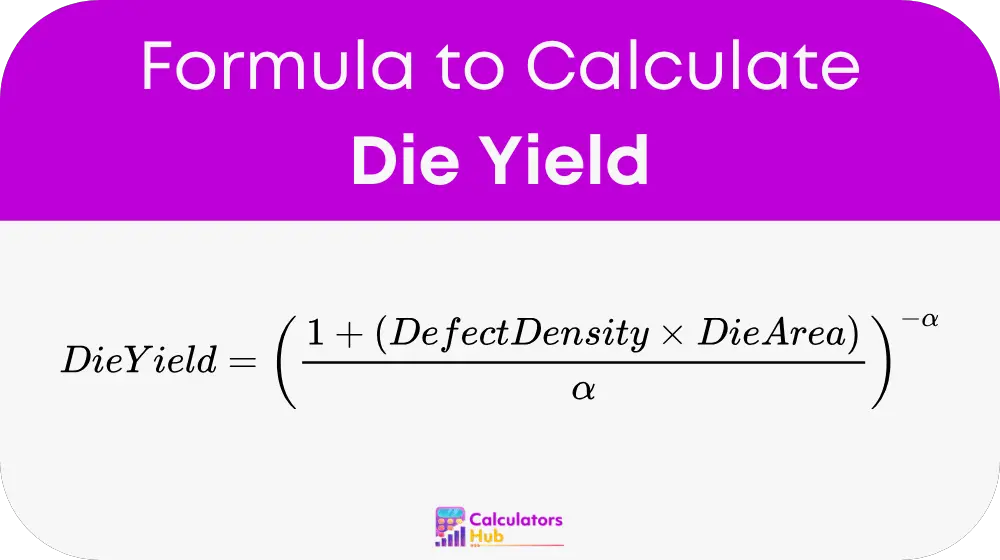The Die Yield Calculator helps semiconductor manufacturers estimate the proportion of functional dies obtained from a wafer. This calculation is crucial in the semiconductor industry, as it directly impacts production efficiency, cost per die, and overall manufacturing profitability. By understanding die yield, manufacturers can optimize their fabrication processes and minimize defects, leading to improved chip production.
Formula of Die Yield Calculator
The die yield is calculated using Murphy’s yield model, which accounts for defect density and die area:

where:
- Defect Density: The number of defects per unit area, typically measured in defects per square centimeter (defects/cm²).
- Die Area: The total area occupied by a single die, typically measured in square millimeters or square centimeters.
- α (Process Sensitivity Factor): A factor that accounts for defect clustering, usually ranging from 2 to 4 in modern semiconductor manufacturing processes.
This equation helps predict how many good dies will be available from a single wafer, allowing for better cost estimation and process improvement.
Die Yield Reference Table
The table below provides an estimate of die yield for different defect densities and die sizes based on a process sensitivity factor (α) of 3.
| Die Area (mm²) | Defect Density (defects/cm²) | Estimated Die Yield (%) |
|---|---|---|
| 25 | 0.5 | 96.2 |
| 50 | 0.5 | 92.6 |
| 100 | 1.0 | 81.0 |
| 150 | 1.5 | 72.4 |
| 200 | 2.0 | 64.5 |
These values serve as a guideline for semiconductor fabrication and process optimization.
Example of Die Yield Calculator
A semiconductor company manufactures a chip with the following characteristics:
- Die Area = 100 mm²
- Defect Density = 1.0 defects/cm²
- α (Process Sensitivity Factor) = 3
Using the formula:
Die Yield = (1 + (1.0 × 1.0) / 3)^(-3)
Die Yield ≈ 81%
This means that out of 100 fabricated dies, approximately 81 will be functional, while 19 will be defective.
Most Common FAQs
Die yield determines the efficiency of semiconductor fabrication. Higher yield means fewer defective chips, leading to lower costs and higher profitability.
Manufacturers can improve die yield by minimizing defect density through better cleanroom conditions, optimizing lithography techniques, and refining wafer processing steps.
Yes, the higher the die yield, the lower the cost per functional die, as fewer wafers and resources are wasted during manufacturing.